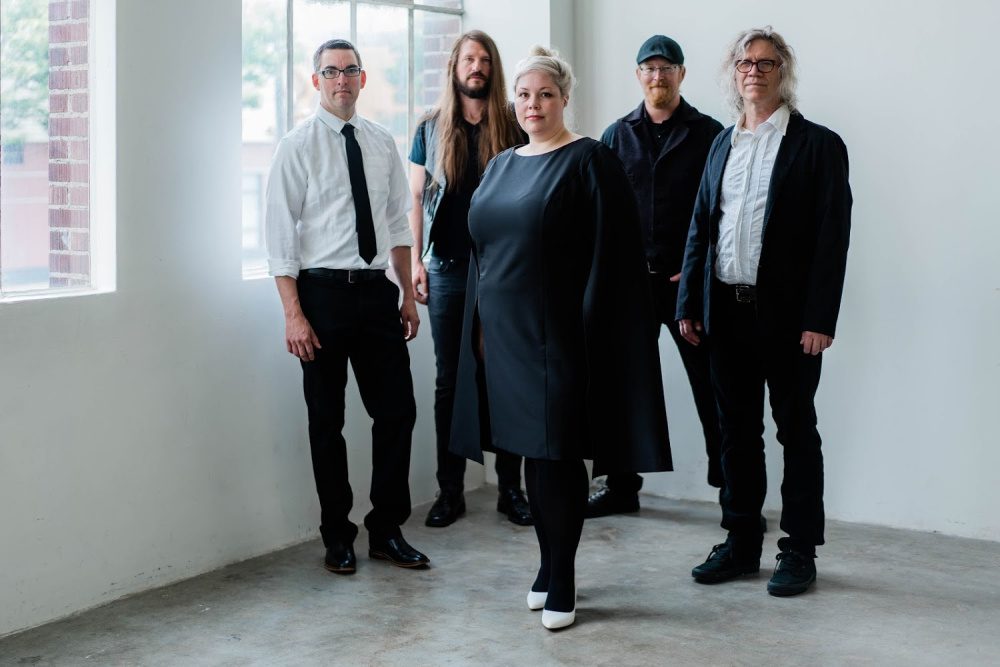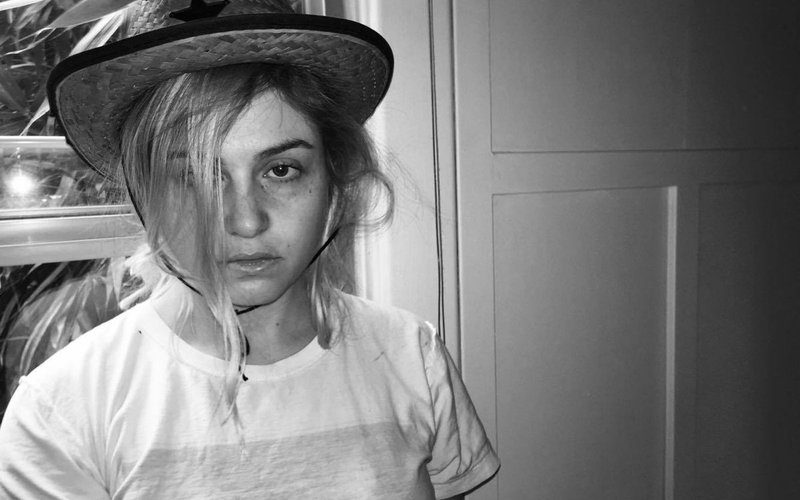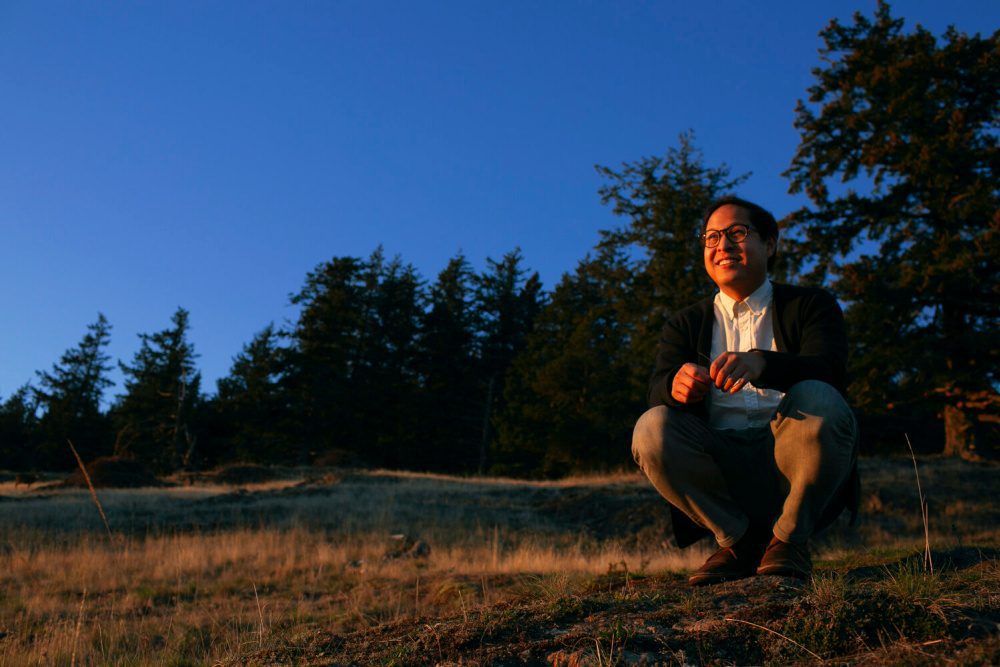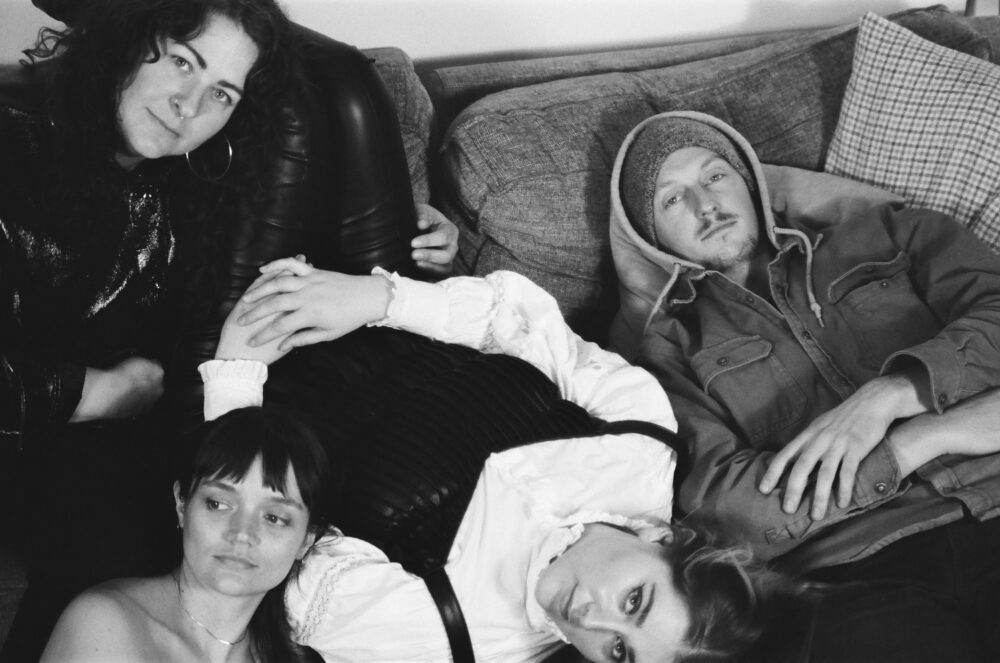

On the title track of her new album, What’s This Death, Amanda Winterhalter sings, “You don’t talk to death, you listen close.” It’s the perfect set-up for the powerhouse 7-track record, which leans in to the stories we tell about death and loss, and reflects them back in a fresh light.
This bittersweet nature of What’s This Death, released on October 4th, was born organically out of Winterhalter’s penchant for gothic Americana and the losses she endured in the last three years. What’s This Death, which shimmers with inflections of Southern rock, rockabilly, and tender indie folk, explores death in its myriad of forms. From the loved on who’s passed on and the once-close friendship that’s grown distant, to more symbolic deaths—like the parts of ourselves that transform along the way.
“I’ve always been interested in death since it’s such a universal part of living, and there’s so much story around it/through it,” Winterhalter said about the record. “My only grandparent I ever knew died a few years ago and I experienced the death of a few significant relationships over the last three years, so all of that definitely influenced these songs as well.”
In conversation with Audiofemme, Winterhalter dove deep into her early life in a rural town on the outskirts of Seattle, her muses, and the raw space of writing and recording What’s This Death.
AF: Where are you from? What got you into music?
AW: I grew up on a small farm about an hour north of Seattle, and I’ve lived in Seattle for about eight years. I had a lot of opportunities to participate in music and performance as a kid – my parents made me and my brothers take piano lessons (I loved playing piano, but I hated practicing!), I sang in church and school choirs, and began to perform as a singer/songwriter and play in bands when I was a teenager.
AF: Is music your full-time gig?
AW: Hahaha – no. That’s a hard full-time gig to muster, and I feel really lucky to work at a fantastic arts & culture nonprofit in Seattle that gives me enough flexibility and energy to also play a lot of music. It does sometimes feel like having two full-time jobs, though.
AF: Your sound has been described as “Gothic Americana.” What does that mean to you? What are some major muses for your music?
AW: Yeah, a lot of people see or hear the word gothic and immediately think goth, or even metal, but we land at a different spot on the genre wheel. Gothic Americana shows up in our sound through a whole lot of grit with a good balance of tenderness on a foundation of some traditional American musical approaches. The pedal steel, soaring choruses, and upright bass lend the backbone of the Americana, and the overdrive and dig and lyrical content provide the gothic feeling and visuals. Some big influencers of our sound as we’ve developed as a band have been Gillian Welch, Townes Van Zandt, Patty Griffin, Cinematic Orchestra, Brittany Howard and Alabama Shakes, Sturgill Simpson.
AF: What’s the story behind What’s This Death? What inspired the album and how long did you spend making it?
AW: About half the songs were written on trips I took around the Pacific Northwest – a cabin at Lake Quinault, a tent on the coast of Haida Gwaii. Some of the tracks are inspired by works of literature that I wrote to perform for Bushwick Book Club Seattle shows. When we were ready to head into the recording studio, these seven songs were the ones from the basket that worked the best as a whole, all coming together around a death theme expressing different manifestations of that through lyrics on loss, distance, disconnection, and grief. We started recording with Johnny Sangster at Crackle & Pop! Studio in January 2019 and in between his tour legs performing with Neko Case, we wrapped up the project by March. Rachel Field at Resonant Mastering put on the final touches, and we spent the summer getting ready for the release in early October.
AF: How does What’s This Death build on your previous release, Olea?
AW: Olea presented a lot of different musical influences, from jazz and folk to rock and Americana. I think What’s This Death shows our development as a band and zeroes in on the balance of grit and tenderness with a bit more cohesion across the tunes. It feels like part of a crescendo, and I think the next album will be a really exciting next stop on that swell.
AF: Is the new album in conversation with the past, present or future? In other words, where was your mind as you were writing these songs?
AW: There’s a lot of conversation with all three on this album. Some of the songs deal with my disconnection from Christianity and the church and that culture and community. Some of the songs are dialogues or monologues of self-talk that both reflect on the past and process the present, as well as try to imagine the future. In all, I think there’s a constant voice of reassurance that even though the future is uncertain, you can anchor yourself and take the agency you need to move forward.
AF: What were the biggest challenges making this new record?
AW: Oh, recording is always a pretty raw and vulnerable space. It’s a really fun time, and provides a lot of inspiration and excitement to hear things coming together as a whole. But when you hear your voice or your instrument isolated while mixing or recording, you hear all your mistakes and flaws. Which is necessary for growth, of course! But there’s always a little soreness and self-consciousness as you’re building your muscles to make your output match your vision.
AF: Tell me about the title track—I hear old time influence in it especially. Did you grow up learning bluegrass, old time, or traditional folk? What’s your relationship to those traditions?
AW: No, I didn’t grow up with that kind of music at all, actually! But I was very drawn to it. Mostly I discovered roots and traditional music through movies with, like, T Bone Burnett or Quincy Jones soundtracks (Oh Brother, Where Art Thou?, The Color Purple). I discovered old jazz and blues at a young age on my own, and that was kind of the first flag of individuality in my music taste since the music in my environment was mostly contemporary Christian and country and some oldies sprinkled in. It wasn’t until my late teens and 20s that I got deeper into the canon of 20th-century music and the incredible local music scene in Seattle. Roots music is so important and resonant to me because of core storytelling – I’m fascinated by the time traveling experience that music provides, and the ability to see into cultures and a broad human experience.
AF: What’s your favorite track on the album? Tell me about the process of writing it.
AW: I love them all! I think my fallback favorite is usually “What’s This, Death?” because it really encompasses in every way – lyrically, musically, conceptually – exactly who I am as an artist and what we do as a band. Every instrument and piece of the band is featured in that song in some way, and I love that!
AF: How does a song start for you? A melody, an idea, a combination of both?
AW: For me, the seed of a song is almost always a melodic phrase. Usually an actual phrase of words pops into my head and my brain puts some notes underneath the words. I’ll build the rest of the song out on my guitar around that melodic phrase, and once I have the musical framework, I’ll finish the lyrics. Sometimes all of the lyrics come along as I build out the song musically. I kind of need both – if I don’t have both a basis of melody and words/concept, it’s tough to move forward and create a whole song.
AF: What do the next few months look like for you? Are you on tour?
AW: We are currently wrapping up little northwest tour! We’ve been making our way through Oregon and will end in Clarkston, WA on 11/22 and Moscow, Idaho on 11/23. Then we’ll do one last show of the year at Tim’s Tavern on December 13 with Claire Tucker and Frames In Motion. And then we’re super excited to start off 2020 playing at Timbrrr! Winter Music Festival in Leavenworth on January 25!
AF: What are you goals with music? What have been the biggest obstacles to those goals? The biggest help?
AW: My main goal is just to keep making music! My vision for sound and songs is always expanding, and I want to keep growing as an artist to always get closer to realizing that vision. I love challenging myself to create music that makes me feel something, and when it resonates deeply with an audience, too, that’s just the best experience in the world. I’d love to keep creating and keep sharing our music with more and more people. The music industry isn’t in a state that provides much support for artists. And while I think the democratization of music is good and necessary, it also creates a lot of over-saturation. But I believe there’s space and an audience for everyone who wants to work at their craft and share it with the world. And finding communities that share that belief is the biggest help. I don’t believe anyone gets anywhere without the support of a community of collaborators, and I’ve been really lucky to find mine. The people I make music with are the best people I know, and we all have so much appreciation for one another.
Follow Amanda Winterhalter on Facebook for ongoing updates.




